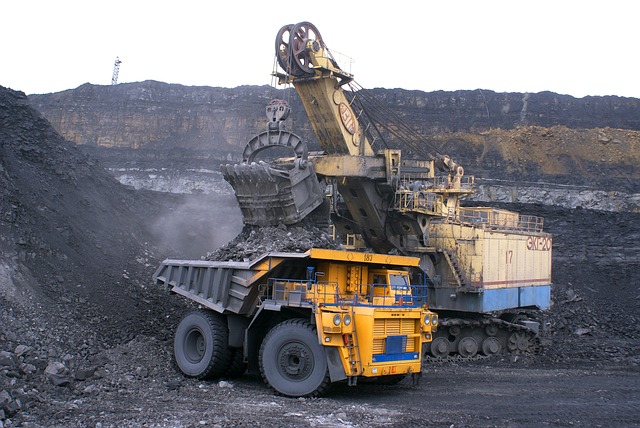Mankind started mining for precious metals between 20,000 and 40,000 years ago. For the last century, mining has been one of our planet’s largest industries (it generated 683 billion dollars in revenue in 2018 alone).
This only underscores the fact that our desire for precious metals and minerals has grown exponentially since we first started digging through the topsoil to get at raw and valuable metals. Mining does comes with its own drawbacks, not to mention the fact that it has a direct correlation with environmental pollution.
Let’s examine the positive and negative effects of mining.

Positive Effects of Mining
Economic Growth
Mining is a vital driver role of economic growth in numerous countries. Locally, it provides much-needed jobs and investment capital. At the top level, it can drive and define national growth. Some nations depend solely on extracting natural resources like many found in the Middle East. Oil has built vibrant and robust economies in countries like Saudi Arabia, Qatar, and the UAE.
In emerging markets, mining is a crucial sector that will determine its future economic growth. While they don’t have the trained and educated workforce that developed nations do, they have raw materials, which are crucial to the rest of the world. Emerging economies now control 70% of copper and 40% of bauxite, which are critical for worldwide production. When mining industries are well managed, countries like Peru, Chile, and Botswana have seen massive economic growth.
Mining is crucial for developed nations as well. For example, mining makes up 20% of South Africa’s total GDP and employs over 1 million people. People estimate that South Africa sits on over$2.5-trillion in mineral reserves.
Provides Opportunities For Indigenous Communities
When practiced ethically, mining can provide fantastic opportunities for indigenous communities. One example is the New Afton Mine in Canada, whose employees are twenty-three percent First Nation. The mine has resulted in over $14 million in revenue for First nation businesses in the area as well. In addition to that, the mine has brought important education and healthcare infrastructure to the undeveloped areas.
Fair development is only possible through strict participation agreements. Mining can only benefit indigenous communities when shared environmental, economic, and social goals are in place and enforced. Years of imperialism has taught us that when these aren’t in place, corporations will siphon resources with little concern for the local population.
Our Infrastructure Requires It
Almost every aspect of our modern infrastructure requires raw materials that we mine. Asphalt for our roads, cement for our buildings, and metal for our pipes all come from mining.
Even our phones, TVs and computers are dependent on mining. All of these electronics require rare earth metals for their batteries and electronic components. Mining as a whole supports every aspect of how our society functions. If all mining ceased on the planet, society would cease to function.
Negative Effects of Mining
Environmental pollution
Mining comes with significant baggage, starting with environmental degradation and pollution. Mining involves toxic substances like sulfuric acid, cyanide, and solvents to separate and process the mineral from the ore. These poisonous substances often poison the top layers of soil. This poisoned soil is why nothing often grows near mines.
The most pressing effect of poisoning the topsoil, as that this eventually reaches groundwater. In the Western United States, 40 percent of headwaters have been contaminated with runoff from mines at one point. In countries with fewer regulations, this issue can become much worse.
Mining is an Unsafe Profession
Up until 2001, mining was statistically the most dangerous profession in the United States.
The toxic substances used to extract minerals cause diseases like cancer and drastically shorten the life expectancy of miners. On a good day, when a miner doesn’t come in contact with chemicals, they’re still inhaling particles that cause respiratory problems and can even lead to death. Beyond that, cave-ins, explosive materials, and equipment failure all contributed to high death rates.
Luckily, in the last twenty years, best practices in the United States have changed to improve safety. The death rate has decreased drastically since the 1990s. Improved death rates aren’t international, though. Mining is still the most dangerous profession in many developing nations.
Mining Contributes To Global Warming
Natural resources extracted through mining contribute heavily to global warming. Coal and oil are burned to power cars and our electric grid, releasing dangerous CO2 into the environment.
Beyond being fueling these processes, mining itself creates a lot of pollution. Geographically speaking, mines are often in remote hard to reach areas outside of existing infrastructure and power grids. Transporting and extracting these resources takes a large amount of fuel and energy. It is estimated that 5% of all greenhouse emissions come from simply extracting and transporting minerals.
Though the negative effects of mining are numerous, the fact is that our society cannot due without it. Even though there are more cons than pros, we have built our world to be conditioned on extracting resources. What society can do is minimize the negative effects through sustainable practices and properly compensating those who live close to this activity.
- Tulip Mania – The Story of One of History’s Worst Financial Bubbles - May 15, 2022
- The True Story of Rapunzel - February 22, 2022
- The Blue Fugates: A Kentucky Family Born with Blue Skin - August 17, 2021
